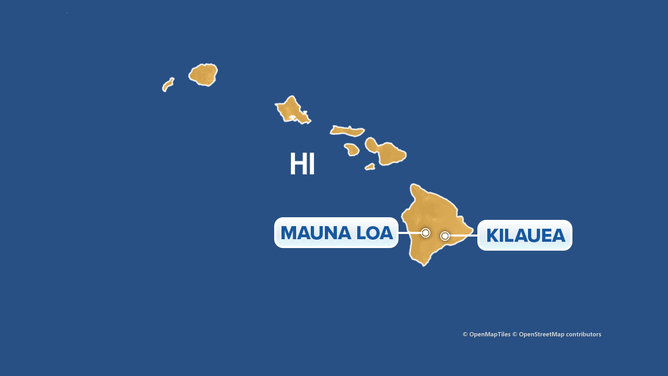Hawaii’s Kilauea Volcano not erupting yet despite 30 earthquakes per hour
USGS scientists with the Hawaiian Volcano Observatory say Kilauea’s upper East Rift Zone began experiencing a "seismic swarm" on the afternoon of June 27, with hundreds of earthquakes. Increasing seismic activity is one of the tells of an impending volcanic eruption, but it's still hard to predict when one will happen.
Watch: Lava shoots from fissure during eruption of Hawaii's Kilauea volcano
The USGS provided video from the first helicopter flight over the eruption of Hawaii's Kilauea volcano showing lava shooting from a massive fissure on Monday, June 3, 2024.
HAWAII VOLCANOES NATIONAL PARK – Seismic activity at the Kilauea volcano inside Hawaii’s Volcanoes National Park continues, with 500 earthquakes occurring over the weekend. However, geologists say the volcano is not erupting.
Increasing seismic activity is one sign of an impending volcanic eruption, but it's still hard to predict when one will occur.
WHAT HAPPENS BEFORE A VOLCANO ERUPTS?
Geologists with the U.S. Geological Survey’s Hawaiian Volcano Observatory (USGS HVO) say Kilauea’s upper East Rift Zone began experiencing a "seismic swarm" on the afternoon of June 27, with hundreds of earthquakes. Late Saturday night, the seismic activity increased to about 30 events an hour, according to the USGS.
Between Saturday and Sunday, more than 500 earthquakes were detected beneath the upper East Rift Zone and surrounding areas. After escalating, earthquake activity eased "slightly" on Sunday morning, according to the USGS HVO.

24 hour imagery taken from a temporary research camera positioned near Maunaulu, looking northwest toward the upper East Rift Zone of Kīlauea.
Still, scientists say it’s impossible to say if the increase in activity will lead to an eruption in the near future or continue with earthquakes. According to the USGS HVO, previous eruptions beneath the upper East Rift Zone happened near Pauahi Crater and Hi'iaka Crater, with the most recent eruption happening over one day in November 1979 near the Pauahi Crater.
"Any substantial increases in seismicity and/or deformation could result in a new eruptive episode, but there are no signs of an imminent eruption at this time," the USGS said.
Kilauea last erupted on June 3 from the southwest summit. The eruptive activity stopped several days later. That area hadn't seen an eruption in about 50 years. However, there is no indication that magma is moving toward that eruption site.

Map noting the locations of Mauna Loa and nearby sister volcano Kilauea.
(FOX Weather / FOX Weather)
Geologists warn that changes can happen quickly, leading to a potential eruption, especially at Kilauea, one of the world's most active volcanoes.
The Volcano Alert Level for ground impacts remains advisory, and the aviation alert-level code is yellow for Kilauea, indicating that the volcano is showing signs of elevated unrest.
